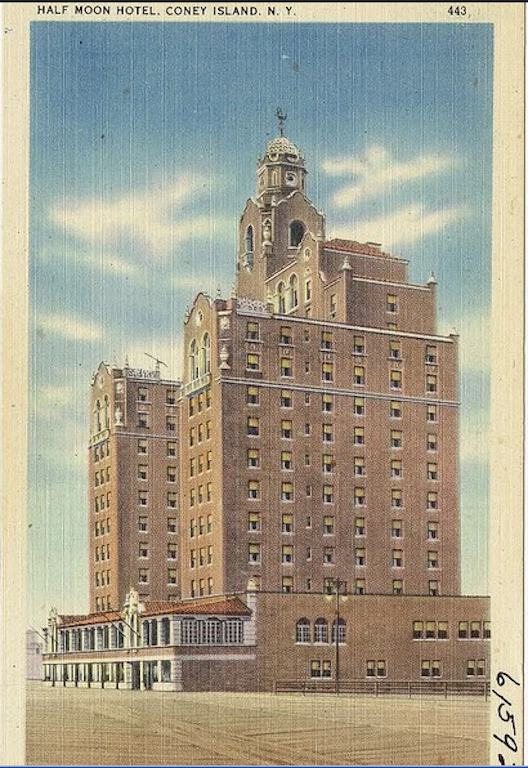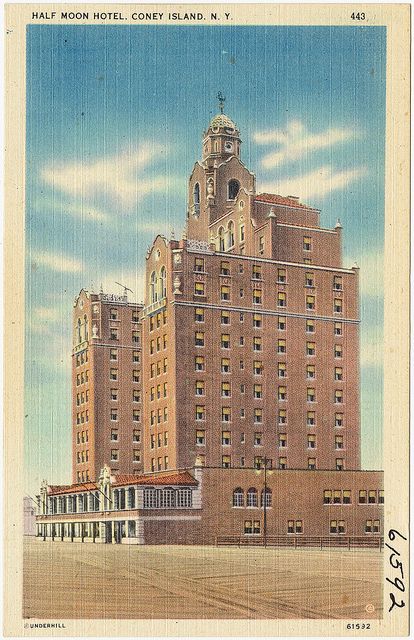History Of Coney Island’s Half Moon Hotel Explored


Nearly a century ago, in Coney Island’s halcyon years, when it was trying to compete with Atlantic City for summer tourist dollars, the towers of the Half Moon Hotel stood beautifully over the boardwalk. The history of the hotel, torn down 15 years ago, is remembered in a fantastic article by Brownstoner, which tracks the hotel through the Great Depression, its days as a mobster hot spot and its conversion into various medical facilities over the years.
The Half Moon Hotel was a 14-story structure located on the boardwalk at West 29th Street. It was built in 1927, at the height of prohibition, to challenge the beachfront hotels drawing thousands to the South Jersey shores in Atlantic City. The hotel was named after explorer Henry Hudson’s ship, remembering when it was anchored at Gravesend Bay. At the time, Hudson was haplessly looking for a shortcut to Asia.
While the hotel was very popular in its early years, the disastrous calamity that was the Great Depression nearly sunk the place for good. The building was nearly torn down in 1939 but managed to hang on. It became the scene of one of the most famous mob deaths in city history when FBI informant Abe Reles allegedly died at the hands of mobster syndicate Murder Inc., after falling from a hotel window.
The hotel’s transformation into a medical facility began during World War II when the US Navy took it over to serve as a hospital. The building was renamed as the “US Naval Hospital Sea Gate, NY.” After the war, the building briefly became a hotel again until it became the Harbor Hospital. Brownstoner then described the complicated history of Half Moon’s days as a medical center:
In 1951, the Hebrew Home and Hospital for the Aged bought the hotel and planned to house indigent senior citizens there in a hotel like setting, with private one and a half room suites. The Home would have dining facilities, recreation rooms, and even a synagogue for its residents. They opened for business in 1953. (On a personal note, I sang with an opera company there once, in 1983. I had never been to Coney Island, at the time, and had no idea where the heck I was. It wasn’t until researching this article that I realized I had been in the Half Moon Hotel.)
By the 1990s, the Home was called the Metropolitan Jewish Geriatric Center, and the hotel building itself was known as the Parshelsky Pavilion. MJGC wanted to build a new Shorefront Jewish Geriatric Center, but the old hotel was in the way. It was torn down in 1996. When it was built, the Half Moon had been the tallest building around for miles. By the time it was torn down, its distinctive tower was lost in the towers of all of the high rise housing around it. Today, the name “Half Moon Hotel” is only remembered by mobster buffs and lovers of old Coney Island.
As corporations are currently pouring millions of dollars into Coney Island, betting that it will flourish in a new post-Sandy era, it was fascinating to read about the many transformations the boardwalk and community has already undergone since the early 20th century.



